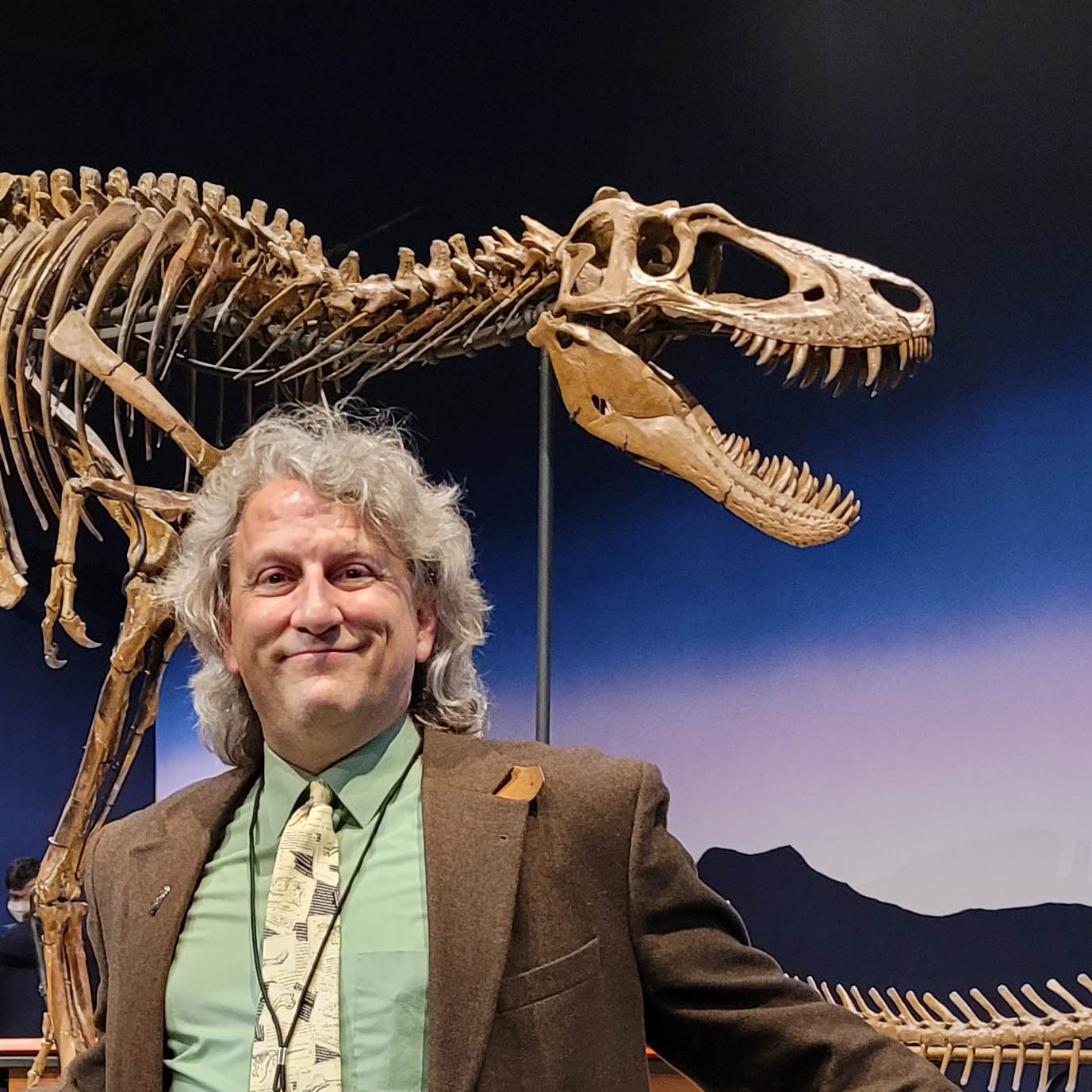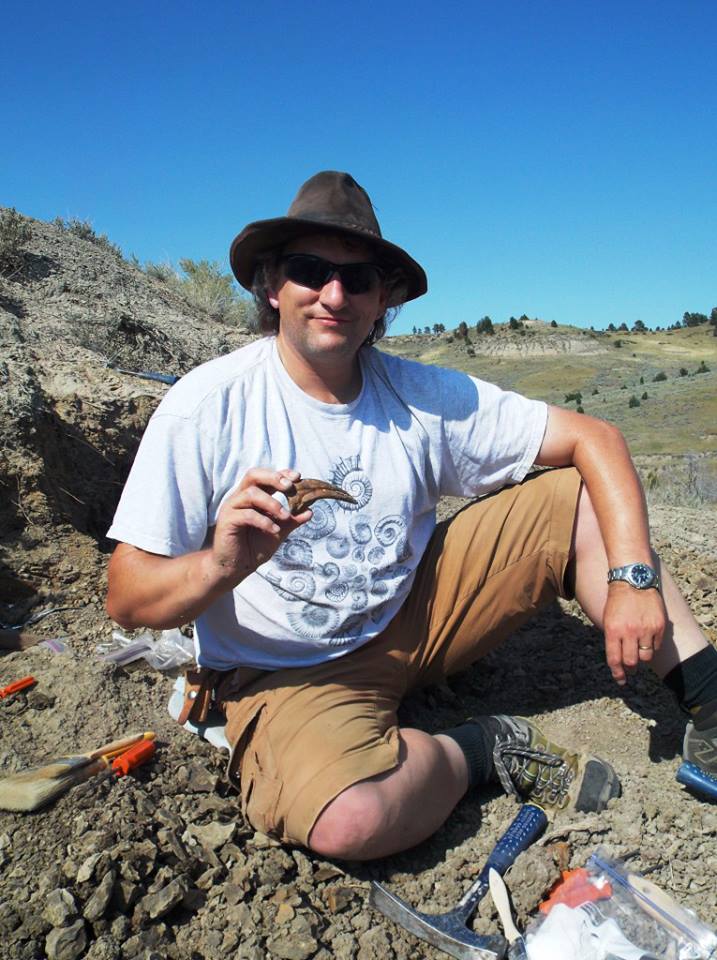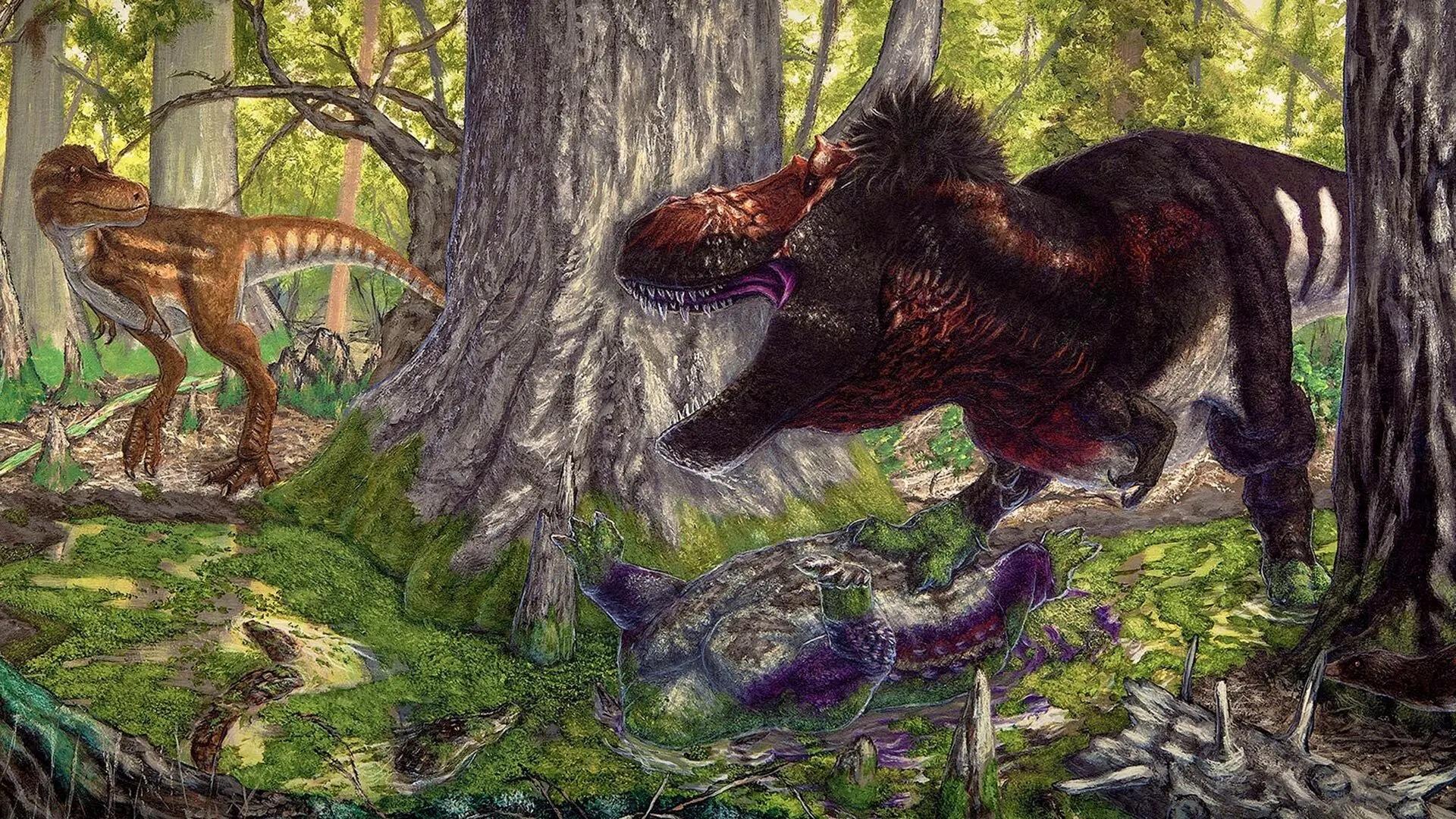 Searching for dinosaur bones has always been an interesting assignment for students in Thomas R. Holtz’s classes. But after the recent discovery of more than 100 dinosaur fossils, the exercise is now a little like prospecting for gold where it’s just been found.
Searching for dinosaur bones has always been an interesting assignment for students in Thomas R. Holtz’s classes. But after the recent discovery of more than 100 dinosaur fossils, the exercise is now a little like prospecting for gold where it’s just been found.
Holtz, Program Director for Science and Global Change Scholars, explains the significance of the discovery of the fossils–which are estimated to be 115 million years old–at the Dinosaur Park in Laurel and how it’s impacting his and other paleontologists’ work.
Q: What is the importance of finding these fossils including a three-foot-long shin bone suspected to be from Acrocanthosaurus, a sharp-toothed carnivore from the Early Cretaceous period?
Dinosaur fossils are rare on this side of the Mississippi. In fact, the bone bed here is the largest collection of dinosaur fossils found together in eastern North America since the late 1800s. Having bones of multiple species helps us better understand the dinosaurs that lived in this region 115 million years ago. This was an interval of great changes, when the foundations of the modern ecosystems (groups like flowering plants and the early ancestors of placental and marsupial mammals) were diversifying in the shadow of the dinosaurs. And although the bone bed is getting the attention, there are many small fossils (from invertebrates, fish, amphibians, mammals, turtles, crocodiles, and so forth) that show us what the complete ecosystem was like.
Q: How were you involved in the discovery of the fossils?
I wish I could say I found these bones, but no such luck! I helped to try and identify them (although final identifications will require them being cleaned of the rind of ironstone on their outsides and comparing them to likely potential matches). I'll continue to help out with IDing the specimens, and hopefully to help dig up some new ones.
Q: What kind of work do you routinely do at Dinosaur Park?
On those days I can get out, I can help prospect for isolated bones on the ground, and if there is space, I help work at the bone bed itself. But the main way I can help is with the identification of the bones and getting the word out about this site.

Q: Do Scholars and/or other students get to participate?
I have brought students from various classes to the site before, and hope to bring SGC students and others there again. Previously they have mostly searched the surface for the presence of bones, teeth, shells, and other fossils. Now that there is a bone bed, it might be possible for them to help in "removing the overburden" (that is, digging up the layers of hill covering the bone bed), and perhaps help with excavating and jacketing the uncovered bones.
Q: Do you expect the recent discoveries to create (even more) excitement for the Dinosaur Park?
Not only do I expect it; it has actually happened! The Saturday after the July 11 press event had the largest attendance for a public day at the Park, and John-Paul Hodnett (the Park's paleontologist) says that the remaining dates for private dig days at the site for 2023 have all been booked up!
Related Media:

Rare dinosaur bone bed discovered in D.C. suburb

When Tyrannosaurs Dominated, Their Kids Were Terrors, Too